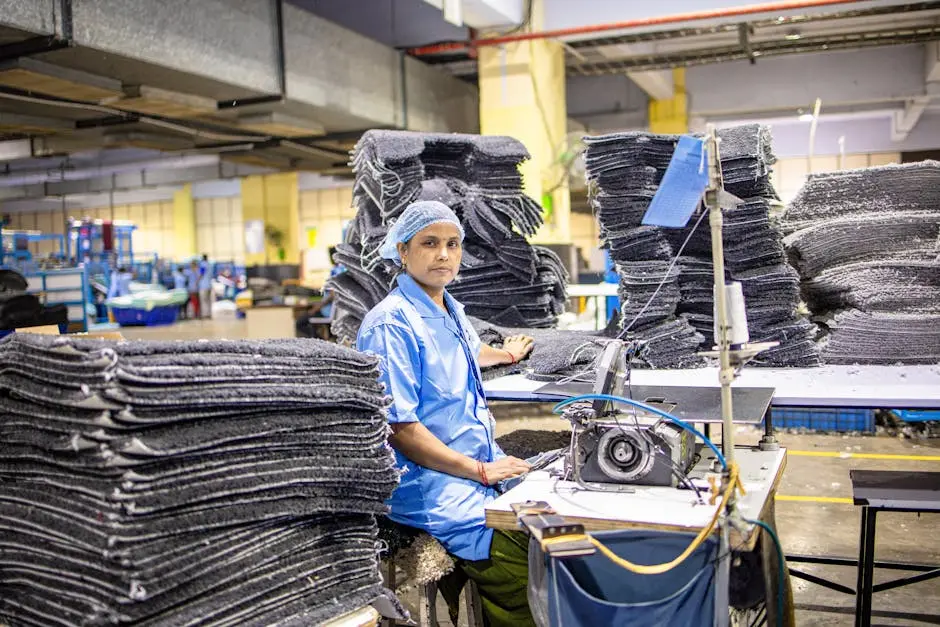Understanding the materials used in custom teeshirts can help you make better choices for quality and comfort. In this guide, we’ll explore the various fabrics and components that contribute to high-quality custom teeshirts, ensuring you know exactly what you’re getting when you order your next design.
Step 1: Understanding Cotton Fabrics
Cotton is often regarded as the gold standard for custom teeshirts, and for good reason. This natural fiber offers exceptional breathability, making it ideal for wear in warm weather.
In addition to being breathable, cotton is incredibly soft against the skin. You have options like ringspun cotton, which is finer and smoother, elevating the comfort level even further for high-quality custom teeshirts.
Organic cotton is another choice that appeals to environmentally-conscious consumers. It’s grown without pesticides and synthetic fertilizers, making it a safe option for both the wearer and the planet.
Different grades of cotton fabric, such as combed or carded, can also affect the end product. Combed cotton has a more luxurious feel due to the elimination of imperfections, while carded cotton offers a more rugged texture.
In summary, cotton fabrics provide versatility and comfort, which is essential when selecting high-quality custom teeshirts.
Step 2: Exploring Polyester Options
Next, we turn to polyester, a synthetic fiber known for its exceptional durability. Unlike cotton, polyester excels in maintaining its shape and resists shrinking, making it a favored option for custom teeshirts.
One of the notable advantages of polyester is its moisture-wicking properties. If you plan to wear your custom teeshirt during physical activities, polyester can pull sweat away from your skin, keeping you dry and comfortable.
When combined with other materials, such as cotton, polyester can create a fabric that balances comfort with functionality. This blend is especially popular in athletic or activewear custom teeshirts.
Furthermore, polyester is known for its vibrant color retention. If you’re interested in bold designs, polyester offers the perfect canvas that will showcase those colors brilliantly.
In conclusion, polyester is a versatile choice for custom teeshirts, particularly for those requiring a blend of durability and performance.
Step 3: Blended Fabrics Explained
Blended fabrics bring together the best of both worlds, combining different fibers to create a final product that meets diverse needs. A popular blend is cotton-polyester, marrying breathability with durability.
This mix not only ensures comfort but also enhances the teeshirt’s lifespan, resisting wear and tear while providing a soft feel. It’s an ideal choice for customized designs that need to endure frequent washing.
Blended fabrics can also improve wrinkle resistance, making them a practical choice for individuals who want a polished look without the hassle of constant ironing.
Moreover, blends like tri-blend, which combines cotton, polyester, and rayon, create a unique texture that promotes a vintage feel—ideal for custom teeshirts that aim for a stylish aesthetic.
Thus, opting for blended fabrics in your custom teeshirts can result in a product that strikes a balance between comfort, versatility, and easy maintenance.
Step 4: Considering Specialty Fabrics
Diving into specialty fabrics, we find materials that offer unique properties. For instance, bamboo fabric is known for its hypoallergenic qualities and its incredible softness, making it a luxurious option for custom teeshirts.
Another interesting option is tri-blend fabric, which combines cotton, polyester, and rayon. This blend not only feels amazing but also drapes beautifully, providing an effortlessly stylish look.
Specialty fabrics like these can elevate your custom teeshirt from just another item in your wardrobe to a go-to favorite that stands out for its comfort and design.
Additionally, there are moisture-wicking specialty fabrics designed specifically for sports enthusiasts. These have quick-drying properties and help regulate body temperature during intense workouts.
In essence, choosing specialty fabrics can significantly enhance not only the feel of your custom teeshirts but also their functionality and overall appeal.
Step 5: Ensuring Quality with Finishing Touches
Finally, let’s talk about the finishing processes that can impact the quality of your custom teeshirts. These are the steps taken after the fabric is woven or knitted, and they can have a huge effect on both appearance and longevity.
Hydration processes can soften the fabric further, making it feel great against your skin. On the other hand, pre-shrinking treatments ensure that your teeshirt maintains its size and form after washing.
Dyeing techniques can also vary widely, from classic methods to eco-friendly options that preserve the environment. High-quality finishing ensures your custom teeshirts come out vibrant and long-lasting.
Do not underestimate these finishing touches—they’re the final step that helps your shirt truly shine. They affect not just the aesthetics but also the durability and comfort of the custom teeshirts you choose.
In conclusion, understanding these finishing processes allows you to choose wisely, ensuring your final product stands the test of time while looking fantastic.
Wrapping Up Your Custom Teeshirt Choices
Choosing the right material for your custom teeshirts is essential for a product that looks good and feels great. By familiarizing yourself with the different fabric options, you’ll be able to select the best fit for your needs, whether for personal use or a business venture.


